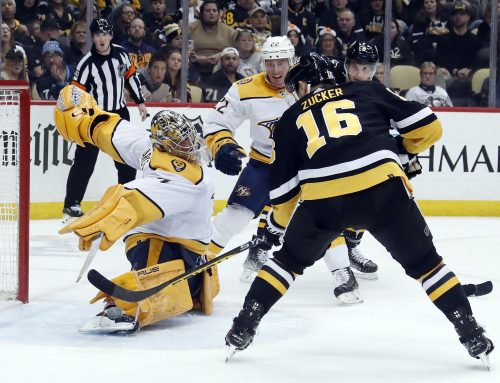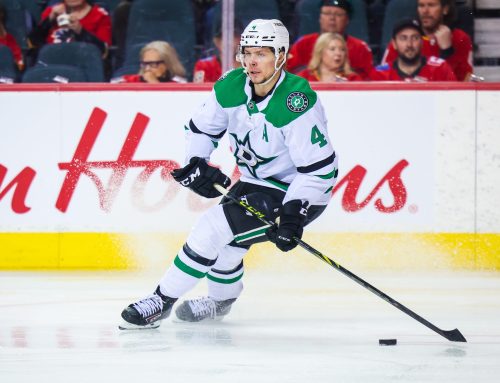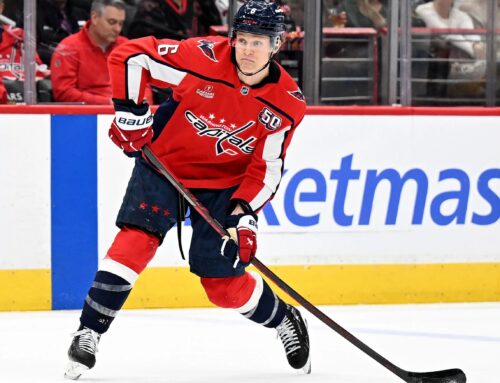
Three faulty strategies to avoid in your salary cap league.
When managing your fantasy league team it is important not to let a biased mindset get in the way of making good decisions. You have all seen examples of this and you may have been the guilty one at one time or another. This bias can be found in many forms and can have some serious consequences for many years in a keeper league. Here are some examples:
Blowing it up when the team underachieves.
A lot can happen during a season including injuries and poor play from some key contributors. Given all of the uncertainty, why should an unfortunate outcome force you give up and rebuild? What is so wrong with simply re-loading and trying again next year?
Rebuild status taking precedence over trade value.
When someone sets their mind to rebuilding, the goal is to get rid of players that will not be there when the team is expected to become competitive again. In return, the team wants young assets that will begin hitting their stride at a later date. The danger is when a GM decides to sell his player for an underwhelming return simply to get younger.
Even though the goal is clear, the assets being sold still hold value. It is up to the GM to get a fair return. Obviously, the better return you get, the less time the rebuild will take to complete.
These two examples illustrate situations where a rigid mindset can ultimately hurt your fantasy squad. However, they are more general and apply to all formats. The next one applies strictly to salary cap leagues.
Acquiring undesirable contracts as the salary cap ceiling rises
When evaluating long-term contracts in the NHL the rising salary cap is often factored in. An eight-year pact could be expensive in the first few years before eventually becoming a bargain by the end, assuming the player maintains a solid level of play. This is a very valid way of thinking and certainly plays a role in the player’s value to his team.
Unfortunately, this line of thinking can trickle its way into fantasy hockey where the parameters are much different. The NHL has been in business for close to a century and will continue to exist for decades. Meanwhile, fantasy leagues open and close all the time. Therefore, it is important to put more weight on the short-term. What happens in eight years matters to the NHL and to your favorite team, but in all likelihood when that day comes your current fantasy league will be long gone. Simply put, if you have to wait a few years for a contract to become good value, that is not a price worth paying.
When the cap rises from one year to the next, the end result is that the current crop of free agents will collectively scoop up the available money. That includes some of your fantasy team’s pending free agents. Each summer we get a couple nasty surprises as players can get grossly overpaid especially if the demand is high and the supply is low. Regardless of how it plays out, chances are that the summer’s festivities will eat a larger chunk of your newly-available cap space than you think.
With this in mind, you can see that acquiring a non-elite player (examples here) carrying an inflated cost is unlikely to pay dividends. If you have a team that spends up to the cap ceiling, then most of the ceiling’s increase will be allocated internally, leaving little space for needless risks on expensive underachievers. If your team is not at that level, then the damage caused by these players will not be felt immediately but when your team eventually pushes the upper salary limit you will notice that the player is impeding your ability to further improve. Thus, the principle of spending money wisely still applies in a world where the cap ceiling rises rapidly.
Alternative approach
Stick to the more sound approach of building an efficient lineup that combines stars and cap bargain players. Focus on improving that core of players. Make sure the players you acquire fit into the overall makeup of your team and provide good value compared to their cap figure. Do not deviate from this approach.
When the offseason arrives and everyone signs their new deals, it is possible that you end up with some free cap space. Perhaps most of your guys were locked up ahead of time so you did not fall victim to the hefty summer raises. Take this opportunity to continue improving your core. Try to make a package deal for a star player that your rival is dangling instead of wasting your chance on an expensive reclamation project that is unlikely to be a major difference maker anyway.
The big picture
Obviously, the team that wins the championship in a salary cap league is the one that gets the best overall bang for the buck. This team will most likely be spending up to or near the salary cap ceiling. Every dollar counts and even if you can afford to bring in a cap-unfriendly player, he will ultimately hurt your overall production. Even if he puts up respectable numbers, the high price tag will have a negative effect on how much you can spend elsewhere on the roster.
Previously in Capped:





 EDM
EDM FLA
FLA MIN
MIN NSH
NSH PIT
PIT UTA
UTA DET
DET CHI
CHI S.J
S.J
